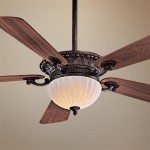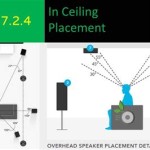Ceiling Fan Remote With Receiver
Ceiling fans are a great way to keep your home cool and comfortable during the summer months. However, reaching up to adjust the fan's speed or turn it on and off can be a hassle. A ceiling fan remote with receiver can solve this problem by allowing you to control your fan from the comfort of your couch or bed.
Ceiling fan remotes typically come with a receiver that is installed on the fan's canopy. The remote then communicates with the receiver using radio frequency (RF) or infrared (IR) signals. RF remotes have a longer range than IR remotes, but they can be more expensive. IR remotes are less expensive, but they require a clear line of sight between the remote and the receiver.
When choosing a ceiling fan remote with receiver, there are a few things to keep in mind. First, make sure that the remote is compatible with your fan. Second, consider the range of the remote. If you have a large room, you will need a remote with a longer range. Third, think about the features that you want. Some remotes only allow you to turn the fan on and off and adjust the speed. Others also allow you to control the fan's direction and set a timer.
Once you have chosen a ceiling fan remote with receiver, follow the manufacturer's instructions for installation. The receiver is typically installed on the fan's canopy using screws or bolts. The remote can then be paired with the receiver by following the manufacturer's instructions.
Ceiling fan remotes with receivers are a convenient way to control your ceiling fan. They are easy to install and use, and they can make your life more comfortable.
### Benefits of Using a Ceiling Fan Remote With ReceiverThere are many benefits to using a ceiling fan remote with receiver. Some of the benefits include:
- Convenience: Ceiling fan remotes allow you to control your fan from anywhere in the room. This is especially convenient if you have a large room or if the fan is mounted high on the ceiling.
- Comfort: Ceiling fan remotes allow you to adjust the fan's speed and direction without having to get up. This can be helpful if you are trying to create a comfortable environment for sleeping or relaxing.
- Energy savings: Ceiling fan remotes can help you save energy by allowing you to turn the fan off when you leave the room. This can help to reduce your energy bills.
When choosing a ceiling fan remote with receiver, there are a few things to keep in mind. Some of the factors to consider include:
- Compatibility: Make sure that the remote is compatible with your fan. You can usually find this information in the fan's manual or on the manufacturer's website.
- Range: Consider the range of the remote. If you have a large room, you will need a remote with a longer range.
- Features: Think about the features that you want. Some remotes only allow you to turn the fan on and off and adjust the speed. Others also allow you to control the fan's direction and set a timer.
Once you have chosen a ceiling fan remote with receiver, follow the manufacturer's instructions for installation. The receiver is typically installed on the fan's canopy using screws or bolts. The remote can then be paired with the receiver by following the manufacturer's instructions.

Ceiling Fan Remote Control River Of Goods 19388

Hunter Universal Fan Light Remote Control With Receiver 99770

Universal Fan Light Wall Control With Receiver 99771

Hunter Universal 3 Speed Ceiling Fan And Light Kit Remote Control With Receiver 99770 The Home

Remote Control Kit For Ceiling Fan Light 6 Speed Variable Frequency Receiver Ebay

Universal Fan Light Remote Control Receiver Not Included 99813 Hunter

Receiver For Ceiling Fan Remote Control 4dip Switch Harbor Breeze Hampton

Hunter 99770 Universal Ceiling Fan And Light Remote With Receiver

Universal Remote Control Kit For Pull Chain Controlled Ceiling Fans

Parrot Uncle Ceiling Fan Remote Control Ga006
See Also








